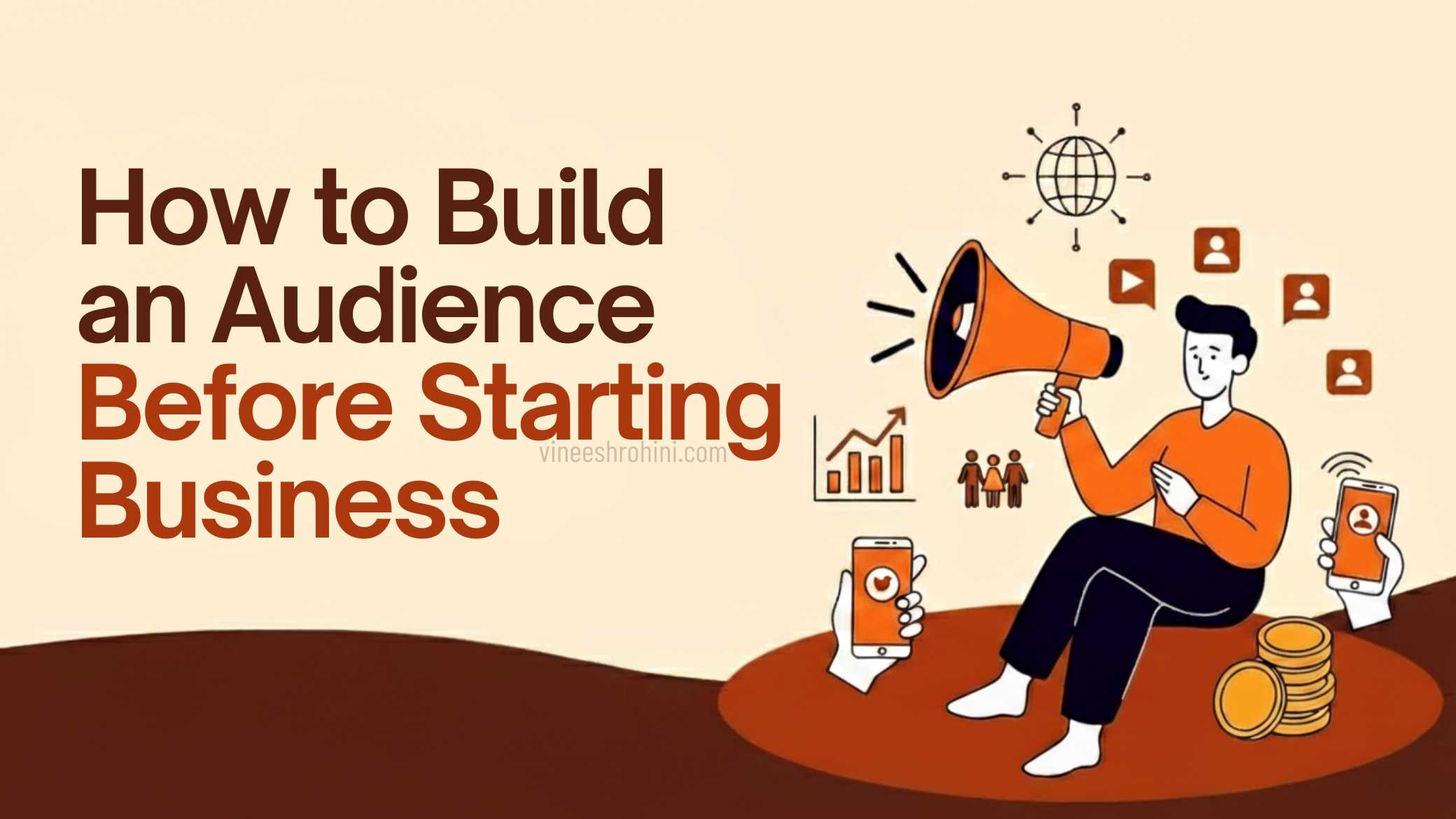How to Create a Business Website ? : Comprehensive Guide 2025
How to Create a Business Website : In 2025, a business without a website is like a store without a signboard. The digital revolution has transformed how consumers discover, engage with, and trust businesses. Whether you’re a startup, a small business, or a growing enterprise, having a professional, high-performing business website is non-negotiable.
Table of Contents
With over 5 billion active internet users worldwide, your online presence starts with a well-crafted website. This comprehensive guide walks you through how to create a business website in 2025—from planning to launch and optimization—packed with high-searching keywords and practical insights.
Why a Business Website is Important in 2025?

Before diving into the steps, let’s explore the importance of having a business website in 2025:
- Builds Online Presence: Your website is your digital storefront, available 24/7.
- Boosts Credibility: Consumers trust businesses with professional-looking websites.
- Enhances Visibility on G: SEO-optimized websites rank on search engines, bringing in organic traffic.
- Enables Lead Generation and Sales: Websites act as powerful sales funnels.
- Supports Digital Marketing Campaigns: PPC, email marketing, and social ads work better when linked to a strong website.
Also Read : How to Build Trust in Your Online Store
With the rise of AI-powered search, voice assistants, and mobile-first browsing, websites must be smarter, faster, and more responsive than ever.
Step-by-Step Process to Create a Business Website in 2025
Step 1: Define Your Goals and Website Strategy
Start with clarity. Ask:
- What is the purpose of your website?
- Do you want to generate leads, sell products, build a brand, or provide information?
- Who is your target audience?
- What action should users take—call, fill a form, or purchase?
Having a well-defined strategy sets the tone for every element of your business website—from design to content to conversion.
Step 2: Choose the Right Domain Name
Your domain name is your website’s digital address (e.g., www . yourbrand . com).
Tips for Choosing a Business Domain:
- Keep it short, memorable, and relevant to your brand.
- Use .com, but consider .in, .co, or niche extensions like .store or .tech.
- Avoid hyphens and numbers.
- Use tools like Namecheap, GoDaddy, or G Domains to check availability.
Step 3: Select the Best Website Platform (CMS)
The Content Management System (CMS) is the backbone of your website. In 2025, these are the top platforms:
- WordPress.org (Self-hosted) – Great for blogs, service businesses, and SEO.
- Shopify – Best for eCommerce websites.
- Wix or Squarespace – User-friendly drag-and-drop builders.
- Webflow – Powerful for design-focused brands.
- Magento / Adobe Commerce – Enterprise-grade eCommerce.
- Framer – Modern and ideal for startups.
Step 4: Purchase Hosting (If Needed)
If you’re using WordPress or other self-hosted platforms, you’ll need to buy web hosting. Top web hosting providers in 2025:
- Hostinger
- Bluehost
- SiteGround
- Cloudways
- Kinsta (for high-performance WordPress hosting)
What to Look for in Web Hosting:
- 99.99% uptime
- Fast loading speed (under 2 seconds)
- Free SSL certificate
- Good customer support
- Scalability
Buy Now : Food Delivery Website With Free Android App
Step 5: Plan Your Website Structure

Design your site architecture so that users (and search engines) can navigate easily.
Must-Have Pages for Business Websites:
- Home – Overview of services or products
- About Us – Company story and vision
- Services / Products – Detailed offerings
- Contact Us – Phone, email, location, contact form
- Blog – For content marketing and SEO
- Privacy Policy / Terms – For legal compliance
- Testimonials / Reviews – Build trust
- FAQs – Answer common queries
Step 6: Design the Website (UI/UX)
A business website must be visually appealing and user-friendly.
Web Design Best Practices in 2025:
- Responsive Design – Mobile-first design is mandatory.
- Minimalist Layouts – Avoid clutter.
- High-Contrast CTA Buttons – Make actions obvious.
- Consistent Branding – Fonts, colors, logos should align with your identity.
- Fast Loading – Use optimized images, lazy loading, and clean code.
Use free tools like Canva, Figma, or hire a freelance UI/UX designer.
Step 7: Write SEO-Optimized Content
Content is the backbone of your website. Create pages with:
- Clear headlines with primary keywords
- Keyword-rich subheadings
- Benefit-driven copy
- Internal and external links
- Easy readability (short paragraphs, bullet points)
- Local SEO elements (e.g., city name)
Example for a home services business:
“Affordable Plumbing Services in Bangalore – 24/7 Emergency Support”
Tools to Use:
- ChatGPT for initial drafts
- Surfer SEO / Frase / NeuronWriter for keyword optimization
- Grammarly for grammar and tone check
Step 8: Add Conversion Tools and Integrations
To turn visitors into customers, add:
- Contact forms (e.g., WPForms, Typeform)
- Live chat (e.g., Tawk.to, Crisp)
- Booking tools (Calendly, Zoho Bookings)
- Email opt-in popups (Mailchimp, ConvertKit)
- Call-to-action buttons (Buy Now, Book a Call, Get a Quote)
Also integrate:
- G Analytics 4 for traffic tracking
- FB Pixel for remarketing
- G Search Console for SEO monitoring
- CRM Tools like HubSpot or Zoho
Step 9: Optimize for Mobile and Speed
G’s core algorithm in 2025 prioritizes mobile-first indexing and speed.
Tips to Optimize:
- Use G PageSpeed Insights or GTMetrix.
- Compress images using TinyPNG or ShortPixel.
- Use a CDN like Cloudflare.
- Choose a lightweight theme like Astra or Hello.
- Minify CSS, JS, and HTML.
Step 10: Launch Your Website
Before going live, check:
- All links work
- Site loads fast
- No spelling or grammar errors
- SSL certificate is installed (HTTPS)
- Site is indexed by G
Once done, promote your launch on:
- Social media
- GMB
- Email newsletters
- WA broadcast
Step 11: Maintain and Update Regularly
A website is not a one-time task. Keep it updated with:
- New blog posts
- Fresh testimonials
- Latest service offerings
- Bug fixes and plugin updates
Schedule monthly maintenance and performance audits to ensure ongoing success.
Top Trends for Business Websites in 2025
- AI Chatbots for 24/7 customer support
- Voice Search Optimization
- Dark Mode Designs
- Interactive Content (calculators, quizzes)
- Video Backgrounds
- Accessibility Compliance (WCAG guidelines)
- One-Page Scroll Layouts
- Personalized User Experience
- Schema Markup for SEO
Budget Estimate for Creating a Business Website in 2025
| Item | Estimated Cost (INR) |
|---|---|
| Domain (1 Year) | ₹700 – ₹1200 |
| Hosting (1 Year) | ₹3000 – ₹6000 |
| Website Builder / CMS | Free to ₹10,000 |
| Premium Theme or Template | ₹3000 – ₹8000 |
| Developer/Designer Charges | ₹8000 – ₹30,000+ |
| Content Writing (Optional) | ₹2000 – ₹8000 |
| SEO Setup | ₹5000 – ₹15,000+ |
| Plugins & Tools | ₹2000 – ₹10,000 |
| Total | ₹25,000 – ₹75,000+ |
Common Mistakes to Avoid
- Choosing a free subdomain (like yourbrand.wix.com)
- Using non-secure HTTP
- Ignoring SEO
- Copy-pasting content from competitors
- Not testing on mobile
- Overloading with animations and popups
How to Create a Business Website – Conclusion

In 2025, building a professional business website is easier, more affordable, and more crucial than ever. From choosing the right domain and hosting to designing, optimizing, and launching, every step influences how your business is perceived online. Whether you use WordPress, Shopify, or no-code builders like Wix or Webflow, the end goal is the same: to build a website that ranks, converts, and grows your business.
Buy Now : Ecommerce Website + Android App
With smart planning, regular updates, and a strong SEO foundation, your business website can become your most powerful marketing and sales tool in the digital era.
Disclaimer : This article is for educational purposes only. Costs, tools, and platform recommendations are based on current trends in 2025 and may vary over time. Always consult a professional developer or digital agency for personalized website development services.



